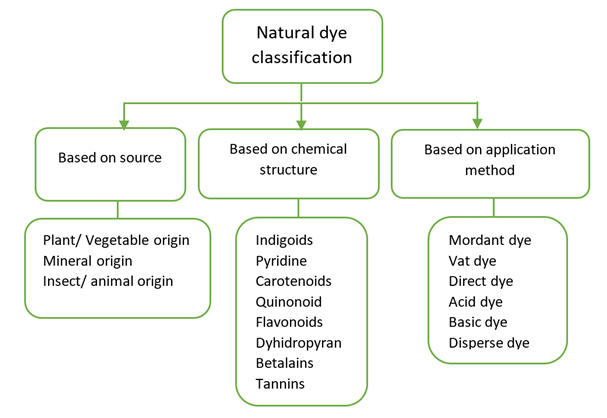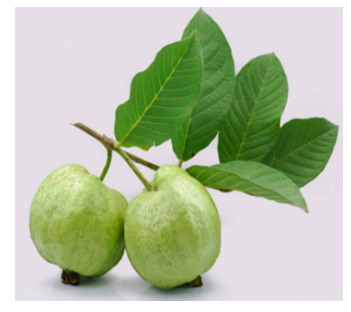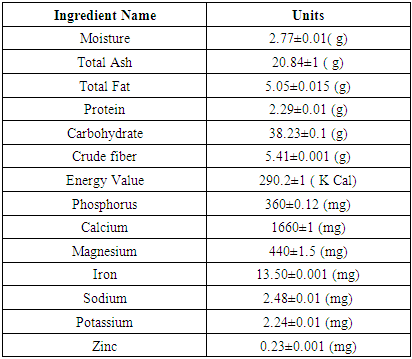-
Paper Information
- Paper Submission
-
Journal Information
- About This Journal
- Editorial Board
- Current Issue
- Archive
- Author Guidelines
- Contact Us
International Journal of Textile Science
p-ISSN: 2325-0119 e-ISSN: 2325-0100
2024; 13(1): 7-10
doi:10.5923/j.textile.20241301.02
Received: Sep. 18, 2024; Accepted: Oct. 3, 2024; Published: Oct. 14, 2024

Review on Guava Leaf Extract- A Natural Dye
Zinia Yasmin1, Md. Jabed Hasan2, Atiqul Kashem Rajib3
1Department of Textile Engineering, Primeasia University, Dhaka, Bangladesh
2Department of Industrial Engineering, Epyllion Style Ltd, Gazipur, Bangladesh
3Department of Fabric Technology, Epyllion Textile Ltd, Gazipur, Bangladesh
Correspondence to: Zinia Yasmin, Department of Textile Engineering, Primeasia University, Dhaka, Bangladesh.
| Email: |  |
Copyright © 2024 The Author(s). Published by Scientific & Academic Publishing.
This work is licensed under the Creative Commons Attribution International License (CC BY).
http://creativecommons.org/licenses/by/4.0/

In textile sector synthetic dyes are commonly used for dyeing fabrics however these dyes are toxic and carcinogenic. Synthetic dyes produce environmental pollution hence it’s non-biodegradability. Natural dyes are the substitute to overcome this problems. Natural dyes are non toxic, bio-degradable and safe for human and environment. Natural dyes are obtained from natural resources as plant, animal, mineral, and insects although the major source of natural dyes are plant. Guava plant is popular for it’s fruit and people pay much attention to its tasty fruits. Moreover, guava leaves are counted as waste as other tree leaves. The guava leaves are rich in vitamins, minerals, and antioxidants, and offer health benefits. It has also been an interesting use as a natural dye. Guava leaves can produce a range of colors. This paper reviews guava leaf juice chemical constituents, dye extraction, and application process. Nowadays, Guava leaf extract dyeing has been an eco-friendly and sustainable process against synthetic dyes and processes.
Keywords: Guava leaf, Waste, Natural dye, Extraction, Eco-friendly
Cite this paper: Zinia Yasmin, Md. Jabed Hasan, Atiqul Kashem Rajib, Review on Guava Leaf Extract- A Natural Dye, International Journal of Textile Science, Vol. 13 No. 1, 2024, pp. 7-10. doi: 10.5923/j.textile.20241301.02.
Article Outline
1. Introduction
- Human have been using colors for thousand years ago. It can be tracked backed that china used plants, bark, insect, and minerals as natural color more than 5000 years [1]. Traditionally these natural colors had been used centuries after centuries. By the end of the 18th century after the discovery of synthetic colors, the use of natural dyes began to diminish [2]. When human began using synthetic dyes on a large scale, the harmful effects on the environment were revealed. Since most of the synthetic dyes are toxic, carcinogenic, and non bio-degradable [3]. At present individuals are more focused on ensuring the survival of humanity. For this motive peoples are paying attention on natural dyes. Different classed natural dyes are organic compounds, derived from natural sources (i.e. plant, insect, and mineral) used as therapeutic products also [3]. Based on source Guava leaf extracts dye is classified as plant/ vegetable base natural dye.
 | Figure 1. Classification of Natural dye [4] |
 | Figure 2. Guava fruit |
 | Figure 3. Guava Leaves |
|
2. Chemical Constituents of Guava Leaf
- Guava leaves are a rich source of various micro and macro nutrients as well as bio-active compounds. They contain 82.47% moisture, 3.64% ash, 0.62% fat, 18.53% protein, 12.74% carbohydrates, 103 mg ascorbic acid, and 1717 mg gallic acid equivalents (GAE)/g total phenolic compounds [12]. Guava leaves contain flavonoids, sesquiterpenes, triterpenoids, coumarins, alkaloids, and tannins [13]. The colors of dyes derived from plants are due to the presence of tannins, anthocyanins, flavonoids, and other phytochemicals, since a single compound does not solely account for the color in plant-based or insect-based dyes [14].
 | Figure 4. Chemical structures of a) Flavonoid, b) Triterpinoid, and c) Tannins |
3. Guava Leaf Extraction
- Dye extraction is the process of obtaining color compounds from natural sources. Several extraction processes are used to extract the natural dyes such as Aqueous extraction, Alkali or acid extraction, Microwave and ultrasonic-assisted extraction, Fermentation, Enzymatic extraction, Solvent extraction, Supercritical fluid extraction [4]. In this study, mainly two types of extraction process are studied to extract the natural guava leaf dye such as solvent extraction and water extraction.
3.1. Guava Leaf Powder Preparation
- First, guava leaves were collected and thoroughly cleaned them to remove any dirt or impurities. Next, dry the cleaned leaves at 50°C until their moisture content is below 10% [15]. After drying, cut the leaves into small pieces and grind them into a fine powder using a grinder. This guava leaf powder can then be used for dye extraction.
3.2. Water Extraction Process
- In water extraction process water is used as solvent to derive the guava leaf extract.100 g guava leaf powder was collected which were previously prepared. The leaf powder were boiled in 1.5 L of distilled water for 4 hours [16]. The mixture was filtered using filter paper to separate the liquid extract from the solid plant material. The resulting filtrate was concentrated using a rotary evaporator at 60°C [16]. The concentrated extract was dried using a freeze dryer. The dried extracts were stored at −18°C for further application [15].
3.3. Solvent Extraction Process
- Ethanol and methanol (as solvent) extracts, by immersing 100 g of guava leaves powder in 1.5 L of pure ethanol (94.0% purity) and 1.5 L of pure methanol (99.8% purity), respectively, for 4 days at room temperature [16]. After that extraction period, the mixtures were filtered through filter paper to separate the solid particle. The resulting filtrates were concentrated using a rotary evaporator at 50°C. Dryer was used to dry and stored at −18°C for further application [16].
4. Guava Leaf Dye Application
- Over 2,000 colors have been synthesized from plant components; however, only about 150 of these have been economically utilized. This highlights the vast potential of plant-derived dyes, while also indicating that many remain under explored in commercial applications [4]. Using of mordant is an important step to ensure the durable and long lasting color of natural dye. Different types of mordants (as Ferrous sulfate, Copper sulfate, and Alum) are used to achieved desire color fastness because they are act as binding agents for fibers and dyes [21]. Usually three types of mordanting techniques (Pre-mordanting, simultaneous mordanting, post mordanting) are used to mordant the fabrics [20]. In this study found that, two types of fabric were dyed with guava leaf extract dye.
4.1. Guava leaf Dye Application on Cotton Fabric
- Pretreated (scoured and bleached)and mordanted cotton fabric was used to dye with guava leaf extract as natural dye. Mordant (alum or tannin) enhance dye uptake % to fabric [18] hence this step improves the color fastness properties. The use of mordant is optional [17]. Previously prepared dye extraction was mixed with water to prepared the dye bath and then the fabric was submerge into the dye solution. The dyeing temperature was carried up to 70-90°C for 30 minutes [17]. Continuous stirring was required for level dyeing. After dyeing, rinse the fabric in cold water to remove excess dye. Then the fabric was hanged to dry away to preserve the color.
4.2. Guava Leaf Dye Application on Silk Fabric
- In this study dyeing of silk fabric with guava leaves extract was investigated [19] where silk fabric was dyed with guava leaf extract dye. (Fe) mordant was used as pre-mordant and post mordant for silk fabric to get better colorfastness properties [19]. Different dyeing temperature (40°C and 90°C) were used and time was 80 minutes were used to dye the fabric. The researcher found good result for color fastness, antimicrobial, and UV protection properties [19].
5. Conclusions
- The use of synthetic dyes in industries poses significant environmental and health challenges. In response, there is a growing demand for alternative natural dyes for clothing that are eco-friendly, readily available, and cost-effective. Guava leaf extract, in particular, has a positive impact on the environment and offers health benefits, such as antimicrobial properties and UV protection for users.In Bangladesh, the annual cultivation of guava is abundant, providing a substantial local source of dye raw material. As the demand for natural and organic dyes continues to rise, there is significant potential to develop more sustainable dyeing processes that minimize environmental impact.
ACKNOWLEDGMENTS
- I would like to thank all the researchers who made their research work on guava leaf dye. Their research works help to gather knowledge for this review paper on eco-friendly alternative dyes for textiles.
 Abstract
Abstract Reference
Reference Full-Text PDF
Full-Text PDF Full-text HTML
Full-text HTML